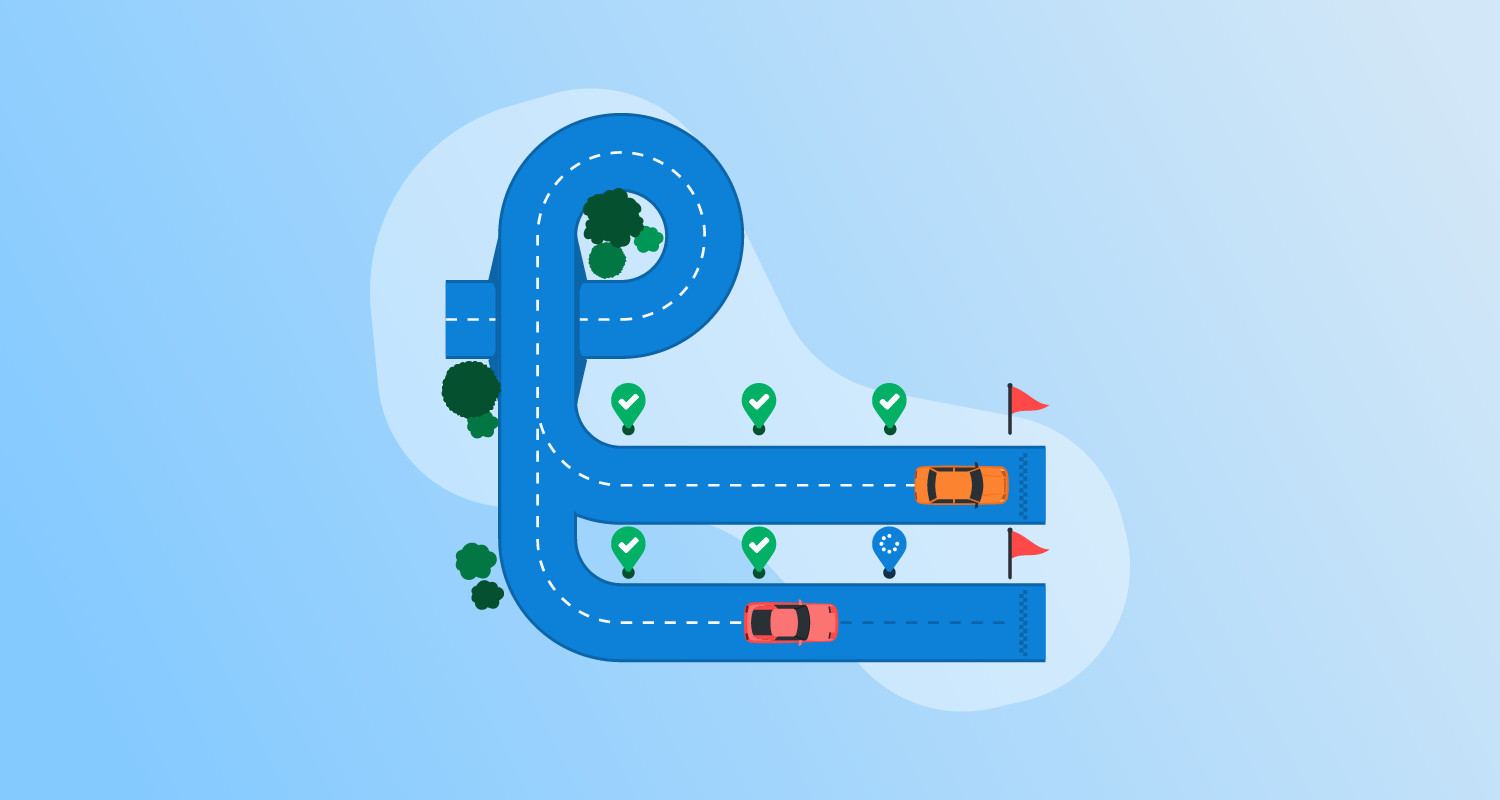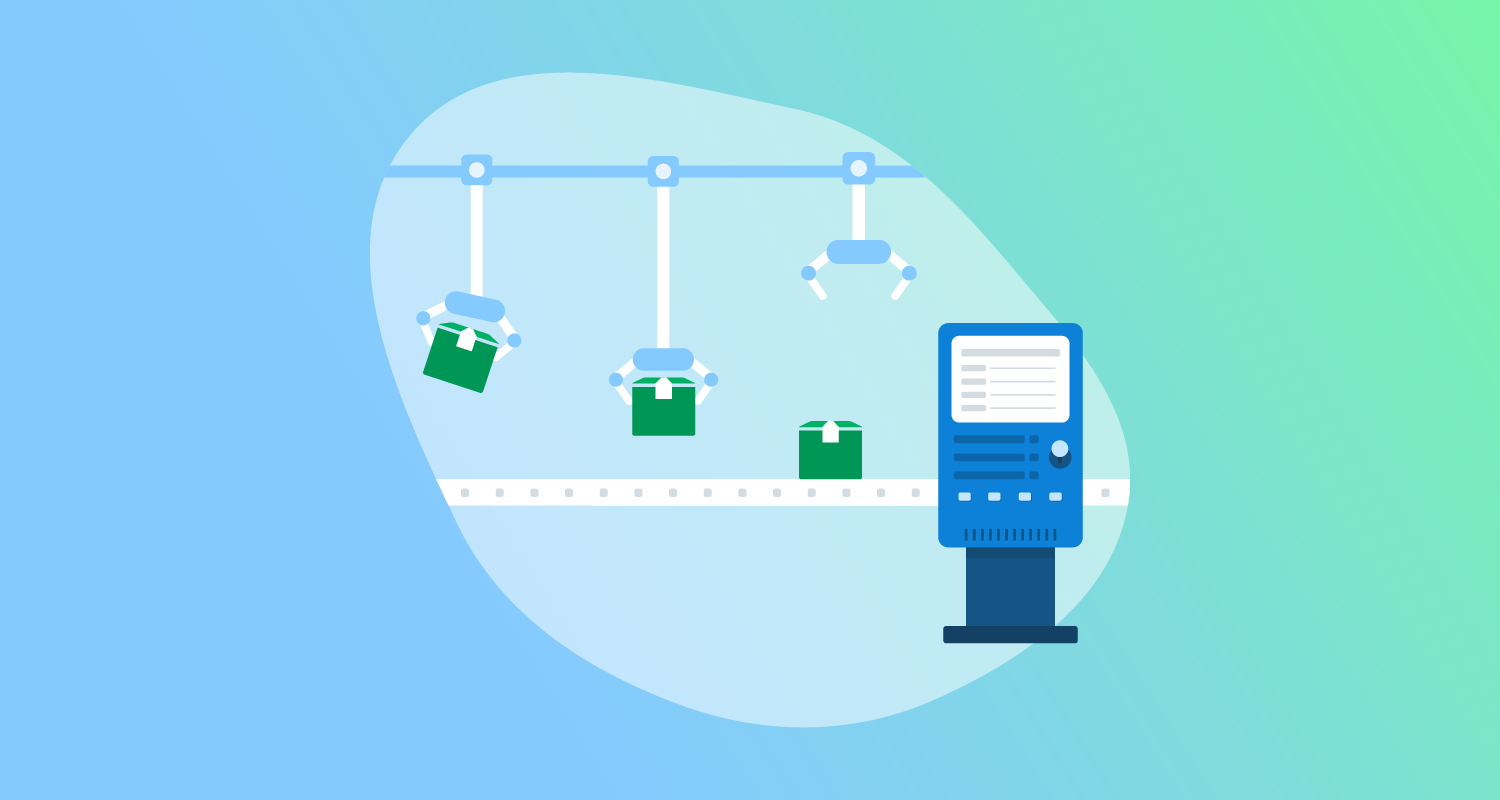What are blue/green deployments?
A blue/green deployment is a software release management strategy that minimizes downtime and reduces risk by running 2 identical production environments, referred to as “blue” (production) and “green” (new version). Only one of these environments serves live production traffic at any time, while the other remains idle. Blue/green deployments let you deploy updates and new features with minimal disruption and maximum reliability.
In a typical blue/green deployment setup, the blue environment is the active environment serving users. When a new application version is ready, you deploy it to the green environment, which mirrors the blue environment but doesn’t handle live traffic yet.
This is part of a series of articles about software deployment.
Benefits of blue/green deployments
Blue/green deployments reduce the risk of downtime during deployments. They’re also a powerful way to use hardware that was traditionally used for staging environments. A blue/green setup serves 3 purposes:
- Staging: When blue is active, green becomes the staging environment for the next deployment.
- Rollback: After deploying to blue and making it active, you discover a problem. Since green still runs the old code, you can roll back easily.
- Disaster recovery: After deploying to blue and being satisfied that it’s stable, you can deploy the new release to green, too. This gives you a standby environment ready in case of disaster.
Blue/green deployments are especially useful for:
- Zero-downtime releases: Organizations that require high availability can use blue/green deployment to release new features without downtime.
- Performance benchmarking: Organizations can use the idle environment to run performance tests on the new version without affecting the live environment. This helps fine-tune and optimize the application before it goes live.
- Compliance and audits: In regulated industries, maintaining a robust deployment strategy is essential. Blue/green deployments ensure that changes are transparent and reversible, smoothing compliance audits.
How does blue/green deployment work?
The blue/green deployment process involves several steps:
- Prepare the new release: Develop and test the new version of the application in a staging environment.
- Deploy to the green environment: Deploy the new application version to the green environment, which is a clone of the blue environment but not yet live.
- Testing: You can test the new version on the green environment to ensure it functions as expected without affecting the user experience.
- Switch traffic: Redirect user traffic from the blue environment to the green environment. You can do this using a load balancer or DNS switch.
- Monitor: Closely monitor the green environment for any issues or anomalies after it goes live.
- Fallback plan: If there are any critical issues, you can quickly switch traffic back to the blue environment, ensuring minimal disruption.
- Cleanup: After the green environment is stable and running without issues, you can update the blue environment with the same changes, keep it as a backup for the next deployment cycle, or phase it out to reduce costs.
Blue/green deployment and Kubernetes
Kubernetes, an open-source container orchestration platform, simplifies the implementation of blue/green deployments. In a Kubernetes environment, you can manage blue/green deployments using several Kubernetes resources and tools:
- Namespaces: Use namespaces to separate the blue and green environments, ensuring isolation and organization.
- Deployments: Kubernetes deployments manage the rollout of the new application version to the green environment. Each deployment can have separate configurations and resource allocations.
- Services: Kubernetes services direct traffic to the appropriate environment. You can update a service to point to the green environment after the deployment is successful and tested.
- Ingress controllers: Ingress controllers handle external traffic routing, allowing seamless traffic switching between blue and green environments based on the ingress rules. Alternatively, external load balancers or a service mesh can handle traffic routing in a blue/green setup.
- Monitoring and logging tools: Use Kubernetes-specific monitoring and logging tools like Prometheus and Grafana to monitor the the green environment’s performance after the switch.
Blue/green deployment pros and cons
Blue/green deployments offer several key benefits that improve software release processes:
- Less downtime: By switching traffic between identical environments, blue/green deployments ensure that users experience minimal or no downtime during updates. This is crucial for businesses requiring high availability.
- Immediate rollback: In case of a problem with the new release, you can quickly redirect traffic back to the stable environment. This significantly reduces the risk of prolonged outages and ensures business continuity.
- Simpler testing: The green environment provides a complete and isolated setup for testing the new version under real-world conditions, without impacting the live user base.
- Improved deployment confidence: Knowing that a rollback is quick and easy, development and operations teams can deploy new features and updates with greater confidence.
- Better user experience: By ensuring new releases don’t disrupt service, blue/green deployments contribute to a better user experience.
- Supports compliance: For industries with strict regulatory requirements, blue/green deployments offer a clear, auditable deployment process. Changes get tracked, and you can quickly revert to a previous state which helps meet compliance standards.
Despite the advantages, blue/green deployments come with several challenges that organizations must address:
- Resource overhead: Maintaining 2 identical environments requires more resources, which can be costly. This includes infrastructure and the effort to keep both environments synchronized and up-to-date.
- Complexity in database changes: If the new release involves significant database schema changes, ensuring compatibility between the blue and green environments can be complex. You need to carefully plan data synchronization and migration strategies to avoid inconsistencies.
- Load balancer configuration: Properly configuring load balancers or DNS settings to switch traffic between environments can be technically challenging. Any errors in configuration can lead to partial traffic routing or downtime.
- Monitoring and testing rigor: You need to comprehensively monitor and test the green environment to find issues before switching traffic. This requires robust monitoring tools and a well-defined testing strategy.
- Security considerations: Running 2 environments simultaneously increases the attack surface. Ensuring both environments are compliant with security policies adds to the operational burden.
- Automation requirements: To effectively manage blue/green deployments, organizations need to invest in automation tools and processes. Manual handling of deployments increases the risk of human error and negates many of the benefits.
8 best practices for effective blue/green deployment
Automate deployment processes
You need to automate your deployment process to make sure you can repeatably and reliably push new application versions to your different environments. Use a Continuous Delivery (CD) tool to automate the steps involved in deploying new versions, checking the application is healthy, and switching traffic.
Modern deployment automation tools can handle complex environments like those used for blue/green deployments. They can also orchestrate infrastructure provisioning and database updates. Advanced tools like Octopus have built-in support for the blue/green pattern.
Use Infrastructure as Code (IaC)
Implement Infrastructure as Code (IaC) to manage your environments. Tools like Terraform, AWS CloudFormation, or Ansible let you define and provision the blue and green environments in a reproducible and version-controlled manner. By codifying infrastructure, you ensure that both environments are identical, reducing the risk of configuration drift.
IaC lets you quickly create, update, and destroy environments, making it easier to scale and maintain your deployment infrastructure. This approach also helps with disaster recovery and compliance auditing, as your infrastructure setup is documented and versioned.
Implement robust monitoring
You need robust monitoring and alerting mechanisms in place. Use tools like Prometheus, Grafana, or Datadog to monitor your blue and green environments’ performance, health, and key metrics. These tools can provide real-time insights into application behavior, system health, and user experience.
Set up alerts to quickly detect any issues during or after the traffic switch. Monitoring should provide a comprehensive view of the environment’s health by covering:
- Application performance
- Server metrics
- Network latency
- Error rates
- User metrics
Thorough testing
You need to check that the application version deployed to the green environment is healthy before switching traffic. To increase your confidence in the deployed application, you can use a mix of automated and manual tests before putting it live. You should design your deployment pipeline to detect problems at the earliest stage possible, as this reduces the volume of tests you need to run against the application deployed to the green environment.
Your testing strategy is likely to include a mix of test types:
- Unit tests check individual components for correctness.
- Integration tests verify that different parts of the application work together.
- Performance tests assess how the system performs under load.
- User acceptance tests (UAT) ensure the application meets user requirements.
Testing in an environment that mirrors production helps identify and resolve issues that might not surface in lower environments.
Gradual traffic shift
Instead of switching all traffic at once, consider a gradual traffic shift. Redirect a small percentage of traffic to the green environment and monitor for issues. Gradually increase the traffic to the green environment while checking the application remains stable with each increase.
This approach is similar to a canary deployment. It can help identify issues early and reduce risk. A gradual shift allows for real-time monitoring and quick rollback if any problems arise. It also minimizes the impact on users by limiting the exposure of potential issues to a small subset of traffic initially.
Maintain database compatibility
Database changes can complicate blue/green deployments. Make sure your database schema changes are backward-compatible. The following techniques can reduce risk:
- Database refactoring patterns let you make changes that are compatible with multiple application versions.
- Database versioning involves maintaining multiple versions of the schema, allowing old and new applications to operate simultaneously.
- Feature toggles let you turn features on or off without deploying new code.
- Rolling migrations apply database changes incrementally, so the application remains operational during the update.
Plan for rollback
Always have a rollback plan in place. Make sure you can quickly and easily switch traffic back to the blue environment if issues arise. Test your rollback procedures regularly to ensure they work as expected and you can execute them swiftly in an emergency.
A well-defined rollback plan should include clear criteria for triggering a rollback, automated scripts for reverting changes, and documentation to guide the process. Regularly practicing rollback scenarios helps the team respond confidently and efficiently during an actual incident.
Learn more in our detailed guide to rolling deployments.
Secure both environments
Maintain the same security standards for both the blue and green environments. Regularly update security patches, perform vulnerability assessments, and ensure compliance with security policies to minimize risks associated with running parallel environments.
Security measures should include:
- Network security
- Access controls
- Data encryption
- Regular security audits
Consistent security practices ensure that both environments are equally protected against threats, reducing the risk of a security breach during deployments.
Automating blue/green deployments with Octopus
You can model blue/green deployments in Octopus using 2 environments; one for blue and one for green. Instead of having a fixed lifecycle that deploys to these environments in separate phases, you can place both blue and green environments in the same production phase.
With this configuration, you can see which software version you installed on each environment and send new versions to either the blue or green environment during a deployment.
Start a free trial of Octopus Deploy.
Help us continuously improve
Please let us know if you have any feedback about this page.

